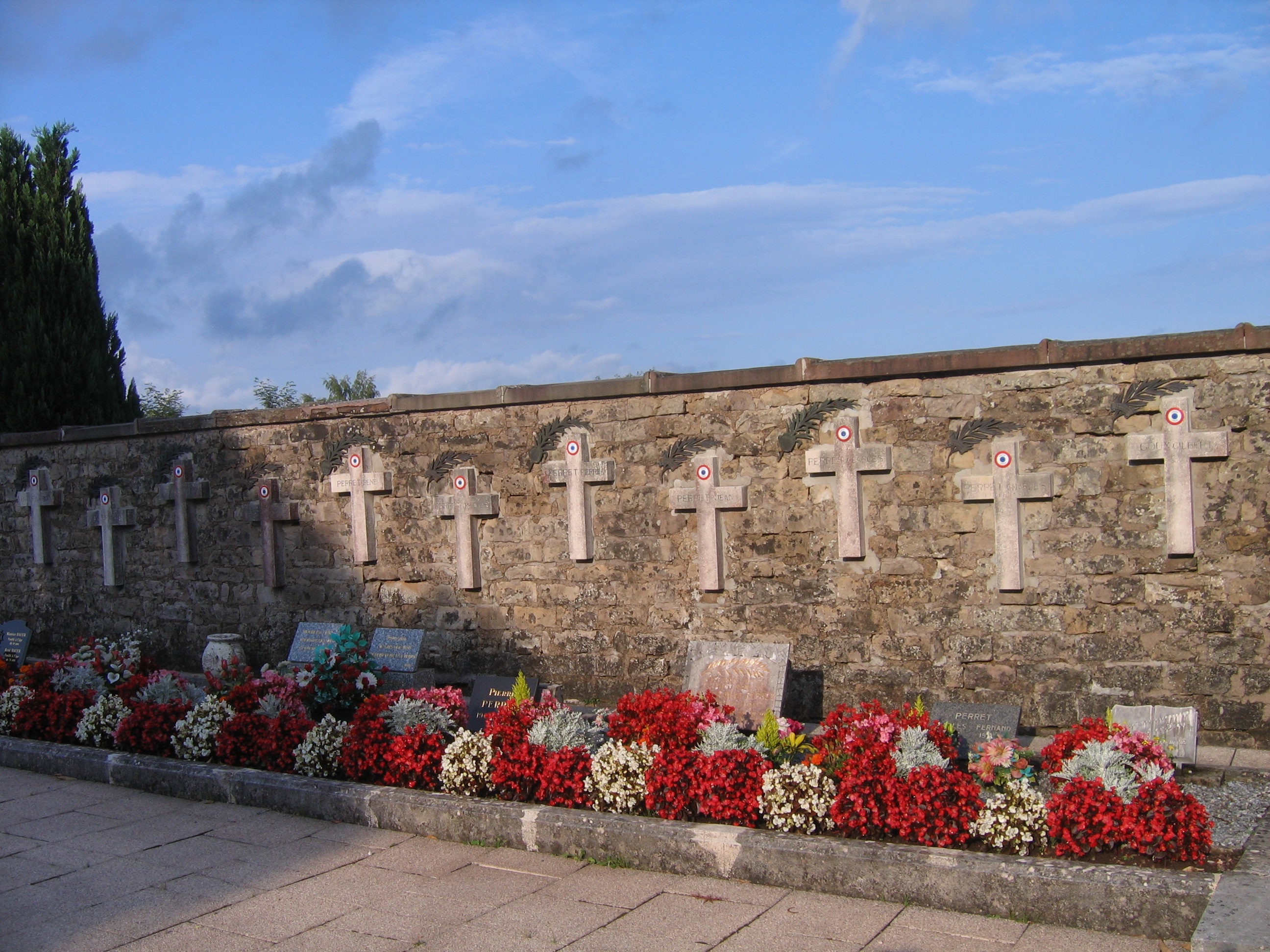Return to the Killing Fields
As men from the neighoring villages dug a huge common grave next to Etobon's cemetery, the bodies of those shot in Chenebier were exhumed from the churchyard to be identified. It was the most horrific of days. Jules Perret could not stand to be present as Jacques and the others were identified.
Friday, December 8
What weather, last night! This morning, the diggers are soaked. I tried to drive a truck full of boards and poles through the mud. In this mess, I couldn’t move an inch. Why do we have to have more of this weather!?
Alas, in the killing field of Banvillars, there are some of ours. Louise recognized her husband Marcel Nardin and Marguerite Nardin her brother Albert. And five gendarmes, taken with them – the adjutant Henry, Pierre LeBlanc, Pierre Bouteiller, Jean Millet and Pierre Savant Ros. New sadness. And worry, because all the corpses haven’t been identified.
Three o’clock. I just came back from the cemetery. What a job! So much dirt! The five meters left between the trenches is not enough, but we can’t start over. We’ll put the monument at the end. But the transverse trench is badly placed for four or five coffins. It’s so hard to do the right thing.
Five o’clock. Suzette and Aline come home from Chenebier. What a wrenching scene! No more illusions. Jacques is dead, killed by a single bullet to the back of the head. He’s not disfigured at all. Only his forehead is wrinkled, as if he’s worried. But so many are unrecognizable! Christ Guémann was shot at least fifteen times. Our niece Hélène recognized my brother-in-law and Samuel. Alfred still seemed to be singing.
Charles’ Marguerite didn’t leave all day. She washed them all. They found Jacques’ wallet, his knife and his beret; but in his shirt pocket, where he and Aline, that same morning, had put a little change-purse with 1500 or 2000 francs and some Bible verses that I had also given to Jacques, there was nothing. His pocket was unbuttoned.
We hear details about all of them. We shiver as we listen.
 A plaque marks the location of the mass grave in the churchyard at Chenebier. The bodies of the fallen now rest in Etobon.
A plaque marks the location of the mass grave in the churchyard at Chenebier. The bodies of the fallen now rest in Etobon.

 Katherine Douglass
Katherine Douglass